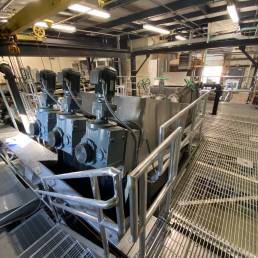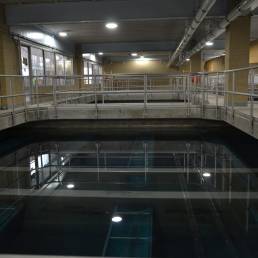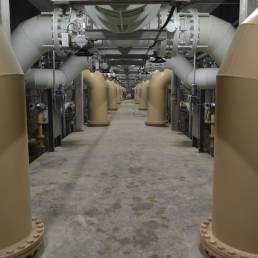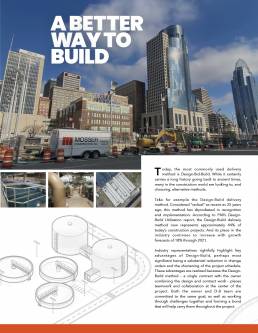Today, the most commonly used delivery method is Design-Bid-Build. While it certainly carries a long history going back to ancient times, many in the construction world are looking to, and choosing, alternative methods.
Take for example the Design-Build delivery method. Considered “radical” as recent as 25 years ago, this method has skyrocketed in recognition and implementation. According to FMI’s Design-Build Utilization report, the Design-Build delivery method now represents approximately 44% of today’s construction projects. And its place in the industry continues to increase with growth forecasts of 18% through 2021.
Industry representatives rightfully highlight key advantages of Design-Build, perhaps most significant being a substantial reduction in change orders and the shortening of the project schedule. These advantages are realized because the Design-Build method – a single contract with the owner combining the design and contract work – places teamwork and collaboration at the center of the project. Both the owner and D-B team are committed to the same goal, as well as working through challenges together and forming a bond that will help carry them throughout the project.
Issues with a recent expansion project at the Valley Medical Center in Santa Clara, CA serve as one such example. The Design-Bid-Build project was marred by extensive delays, cost overruns and finger pointing which ultimately resulted in a price tag $176 million higher than the original contract.
The Medical Center’s CEO Jeff Smith said the project delivery method was a major problem.
“The main thing I learned is the design-bid-build process is not a process that’s a good one for a complex building project … It failed us,”
Smith told Silicon Valley Business Journal, noting they should have chosen the Design-Build method.
Research supports the growth and movement toward Design-Build. According to a CII/Pankow analysis, a comparison of Design-Build versus Design-Bid-Build found:
- D-B provided 36% faster construction
- D-B offered 3.8% less cost growth
- D-B offered 102% faster delivery speed
- D-B provided 1.7% less schedule growth
Looking at the Design-Build method in the water and wastewater sectors, recent research from the Water Design-Build Council found that the Design-Build project delivery continues growing in popularity for water/wastewater treatment and infrastructure projects. They forecasted a nearly 17% increase in Design-Build project spending for a four-year period ending 2021. In addition, cost, risk, and delivery time are expected to be key drivers in furthering the use of this method.
For Mosser, the Design-Build delivery method has long been a part of the team’s approach. Mosser is a go-to company for this project method because of its years of experience and ability to bring cost-saving ideas to projects prior to and throughout the design process. The company also takes great pride in its ability to listen to owners’ needs, helping them achieve their goals using the most economical route.





